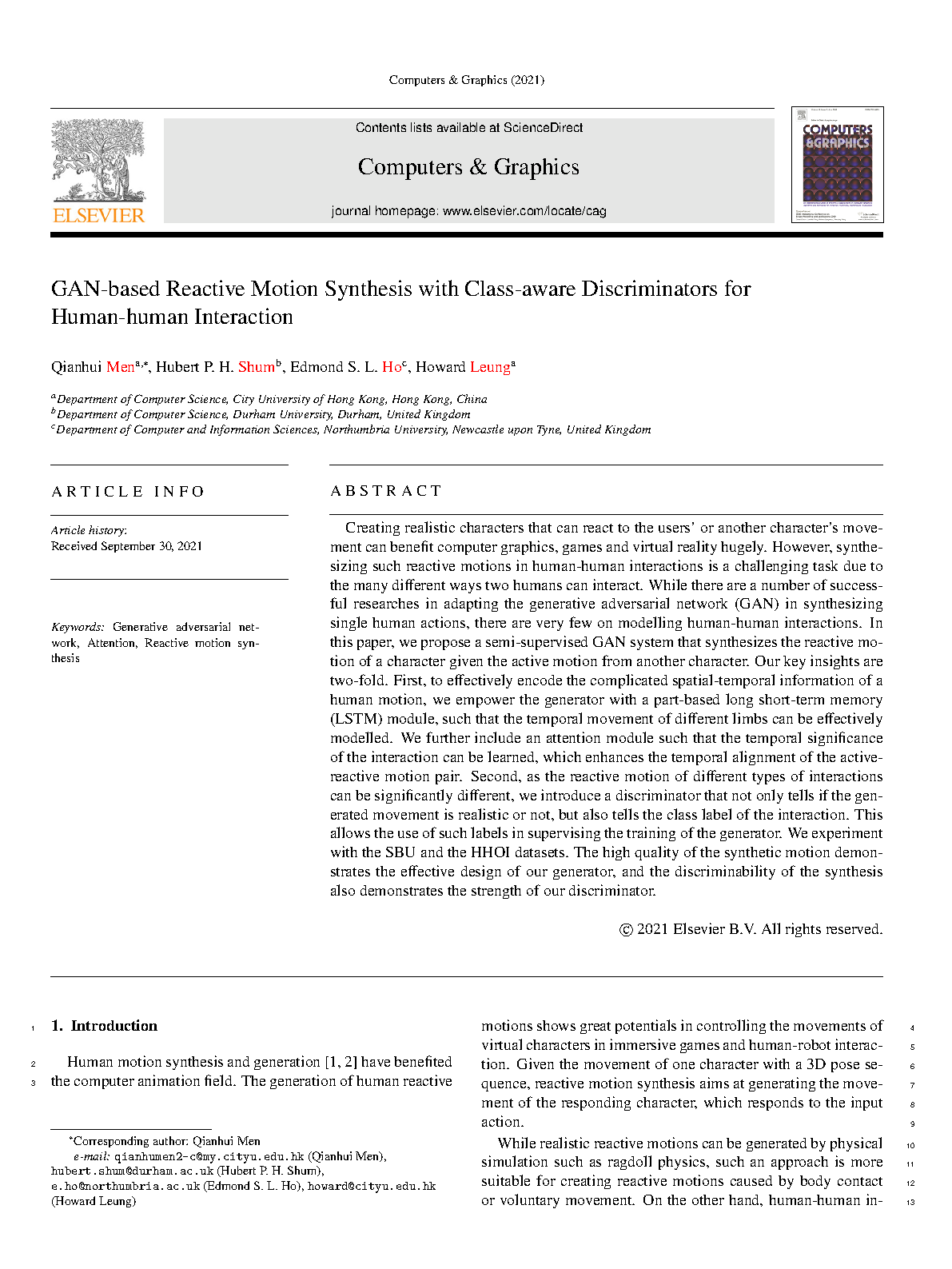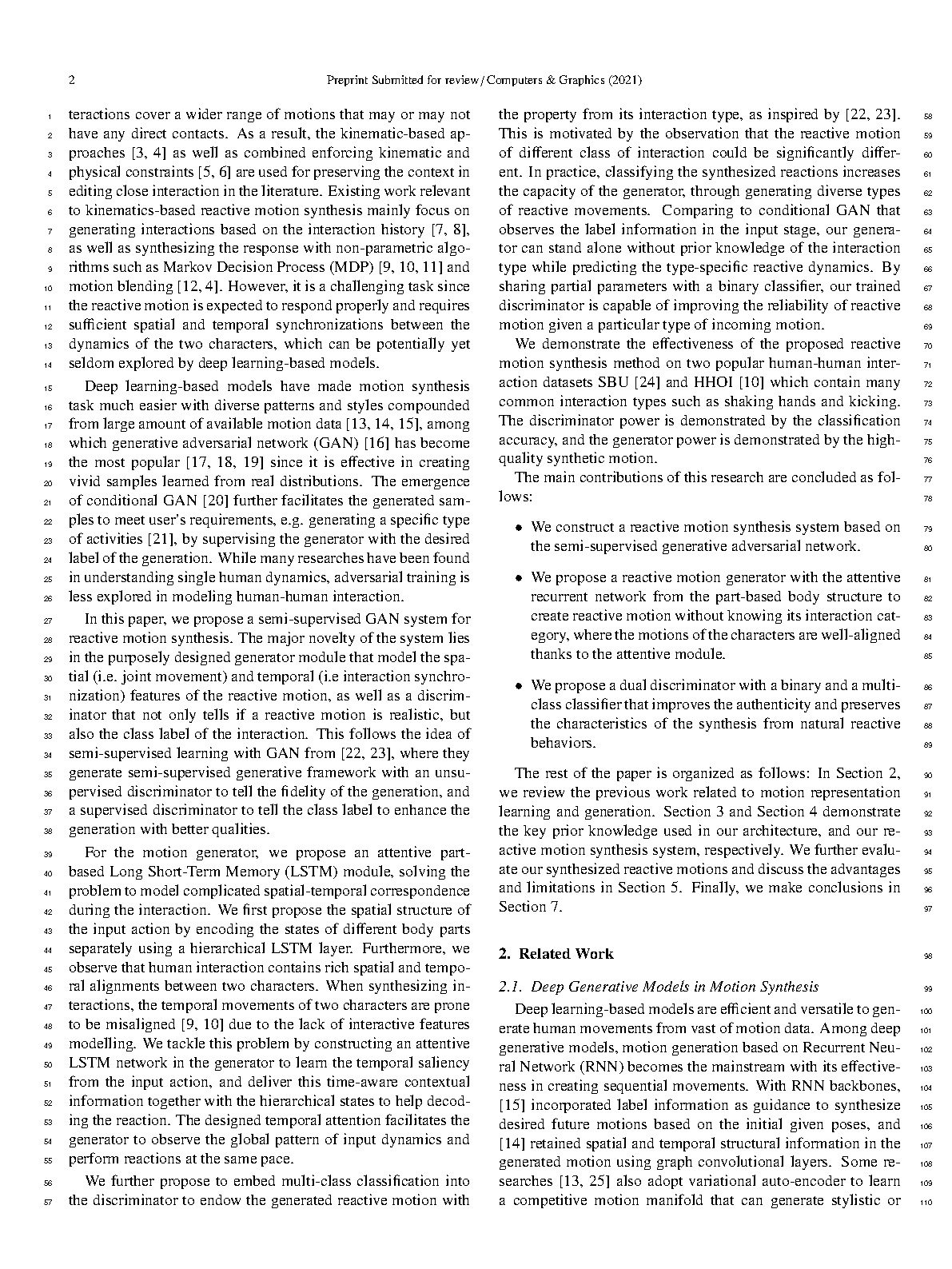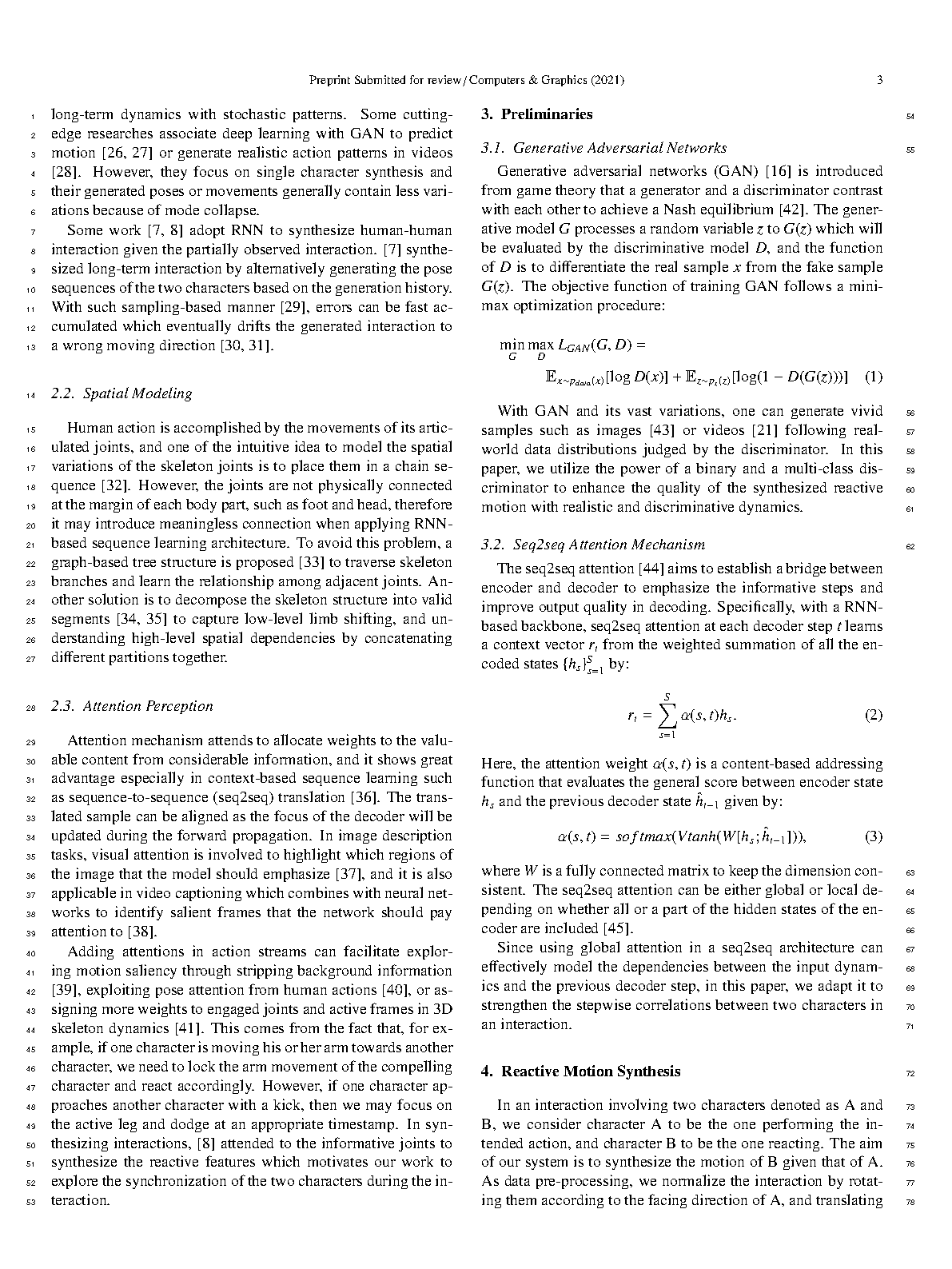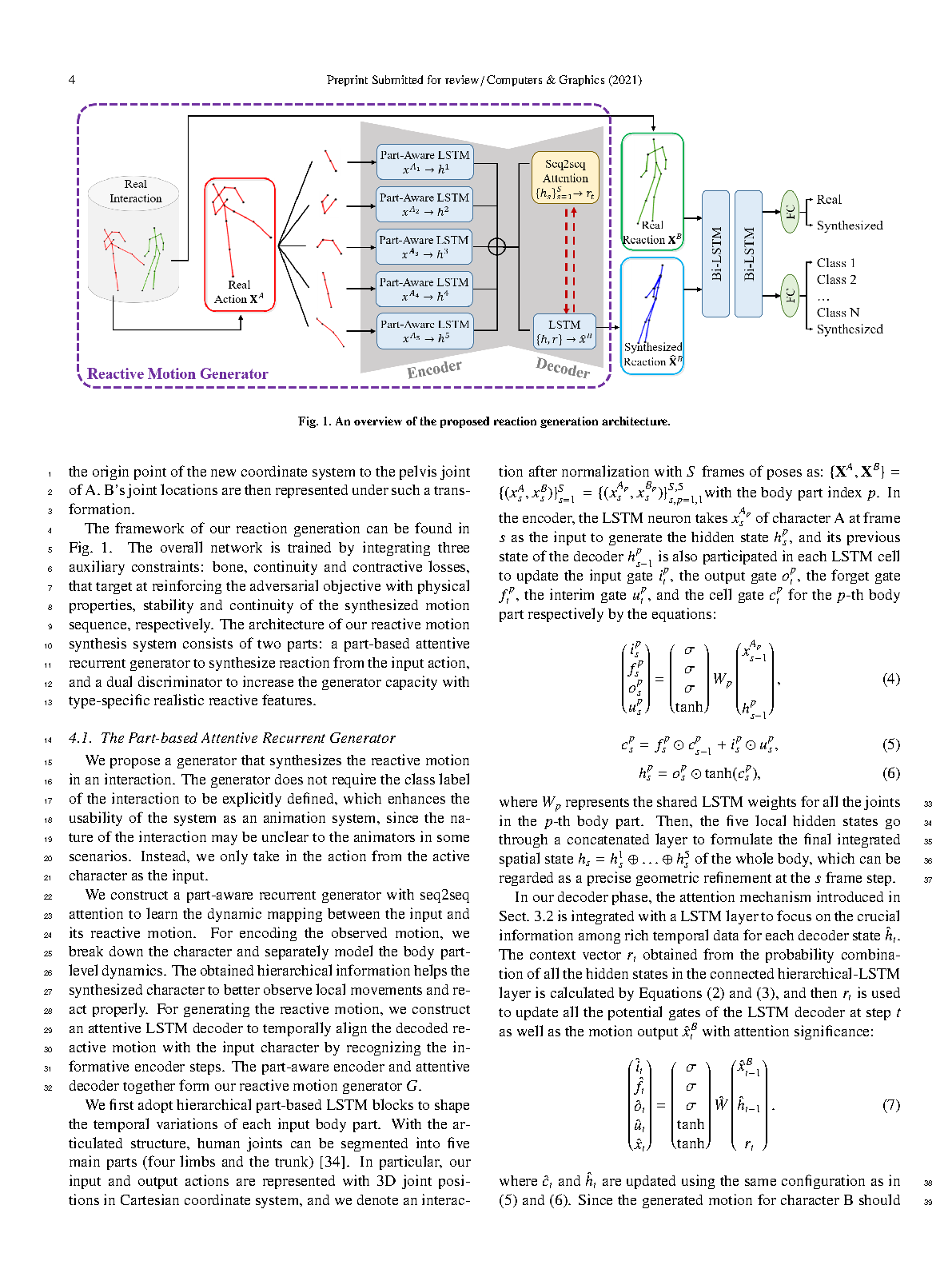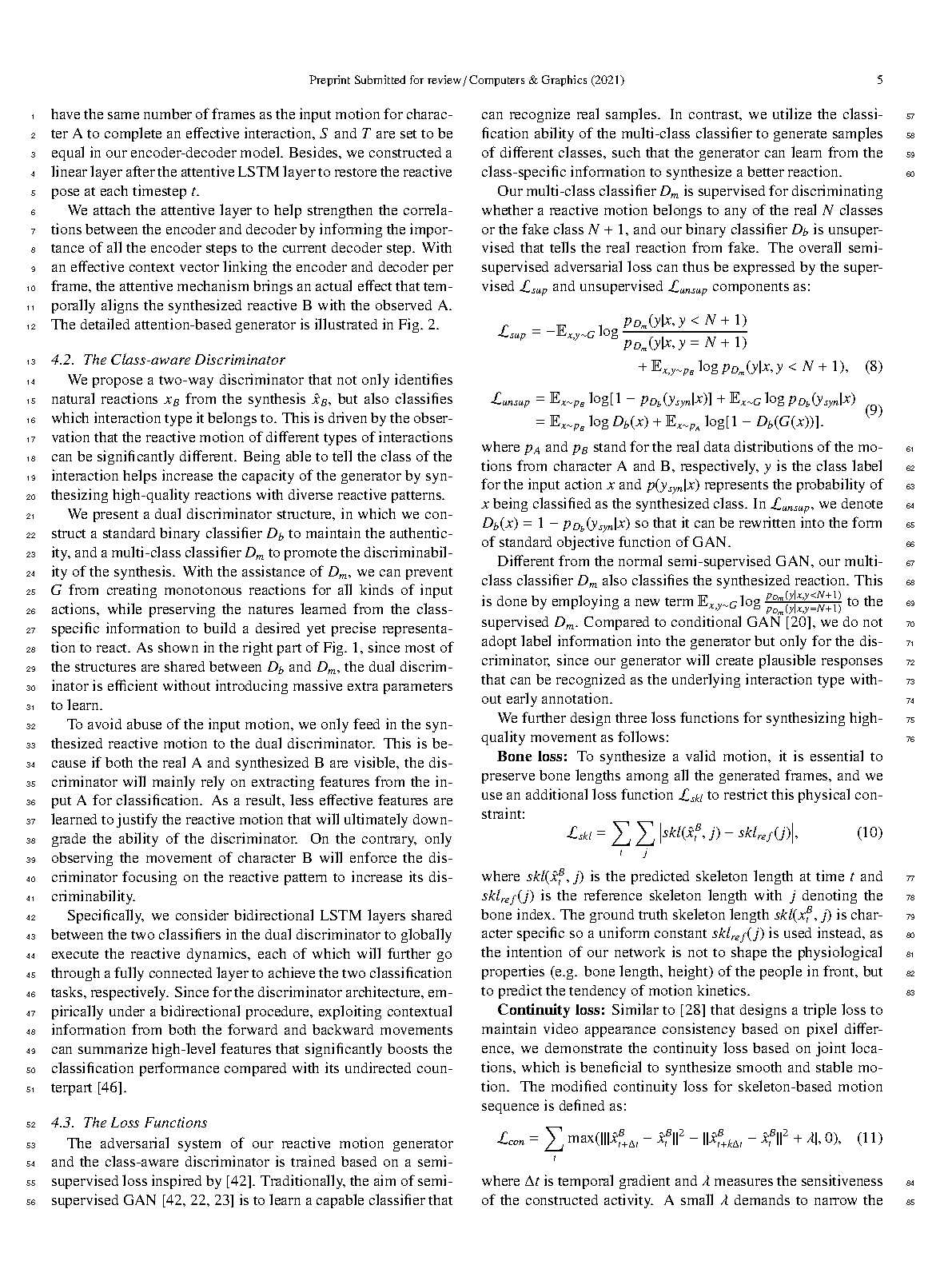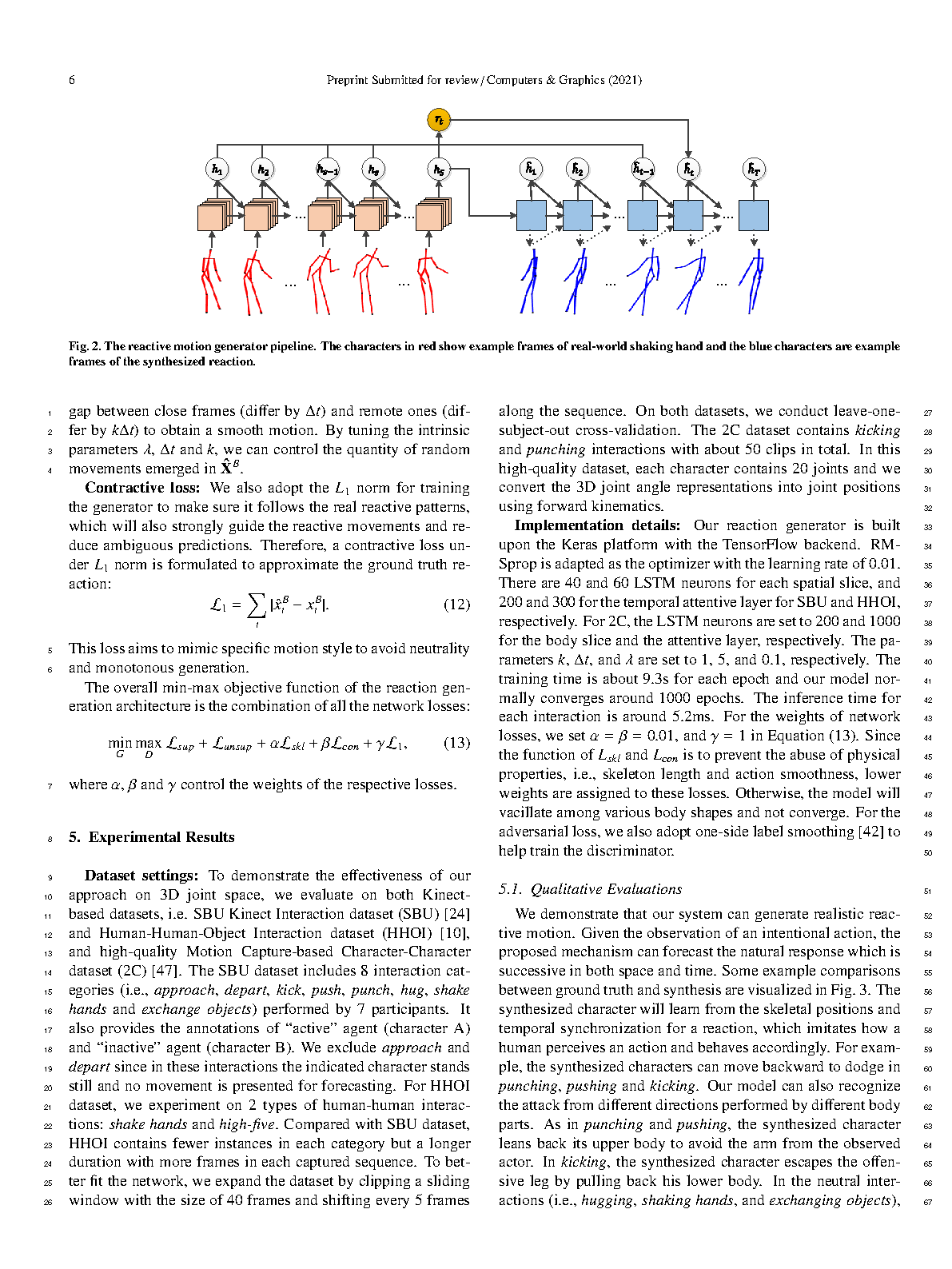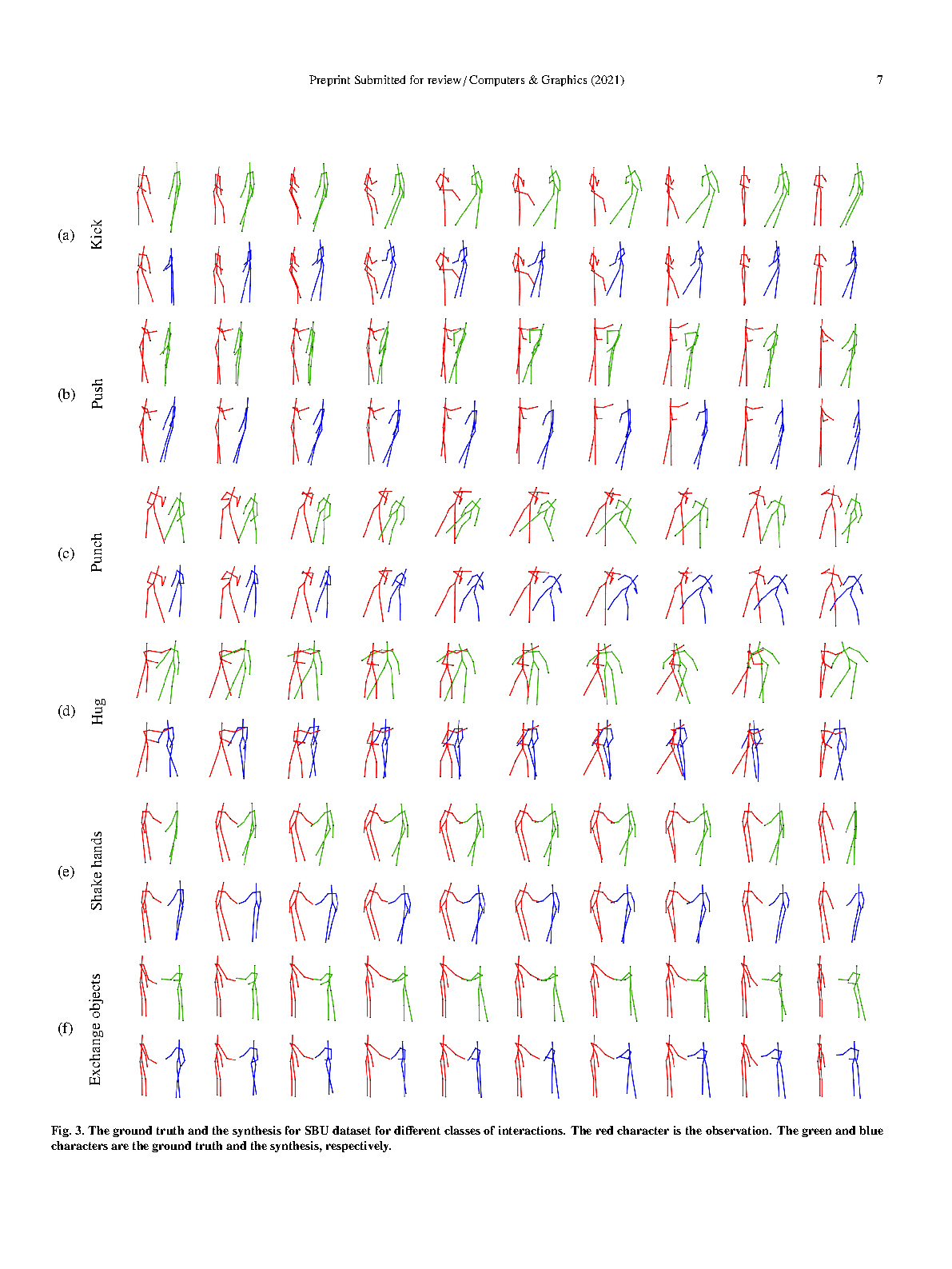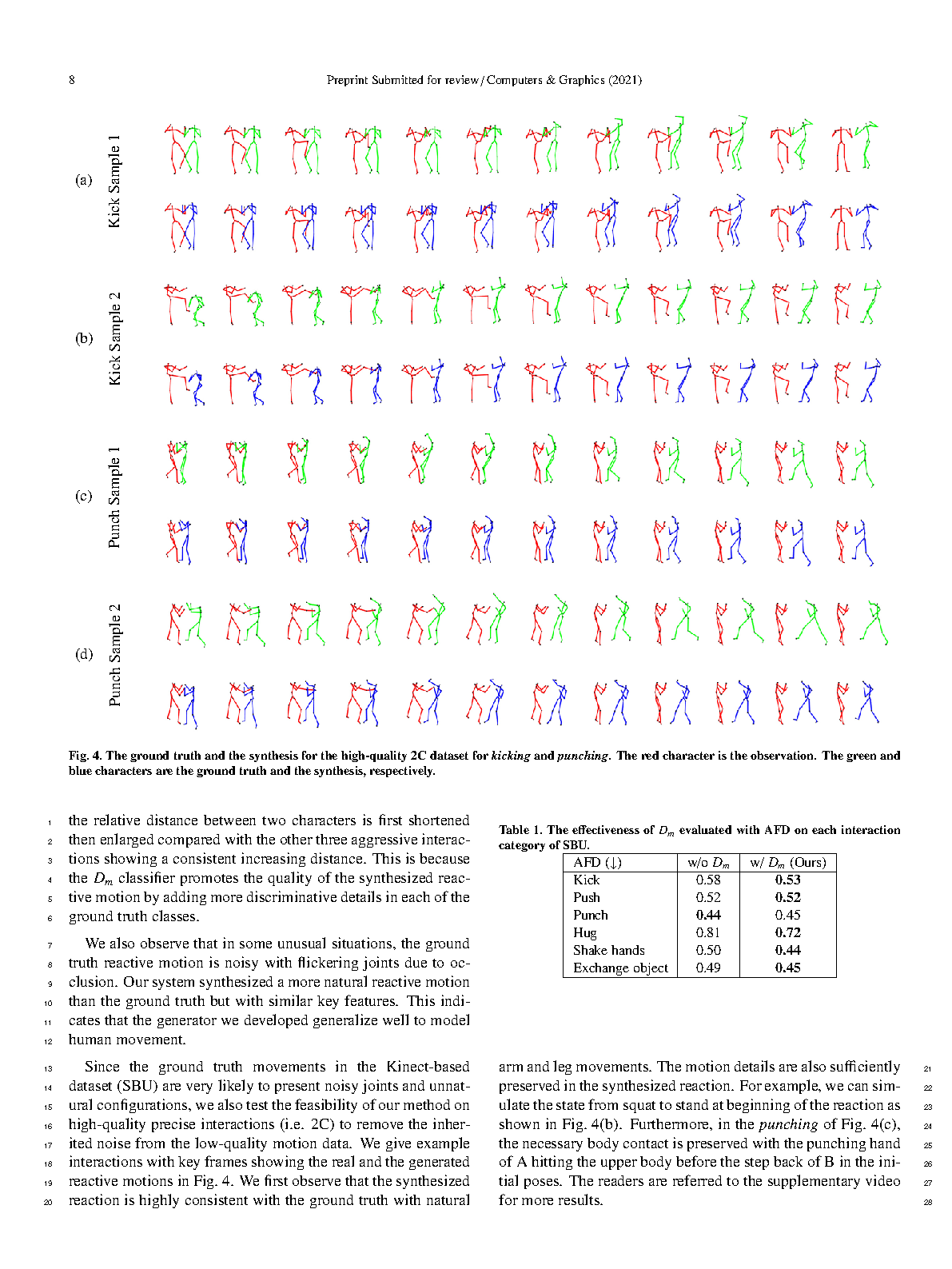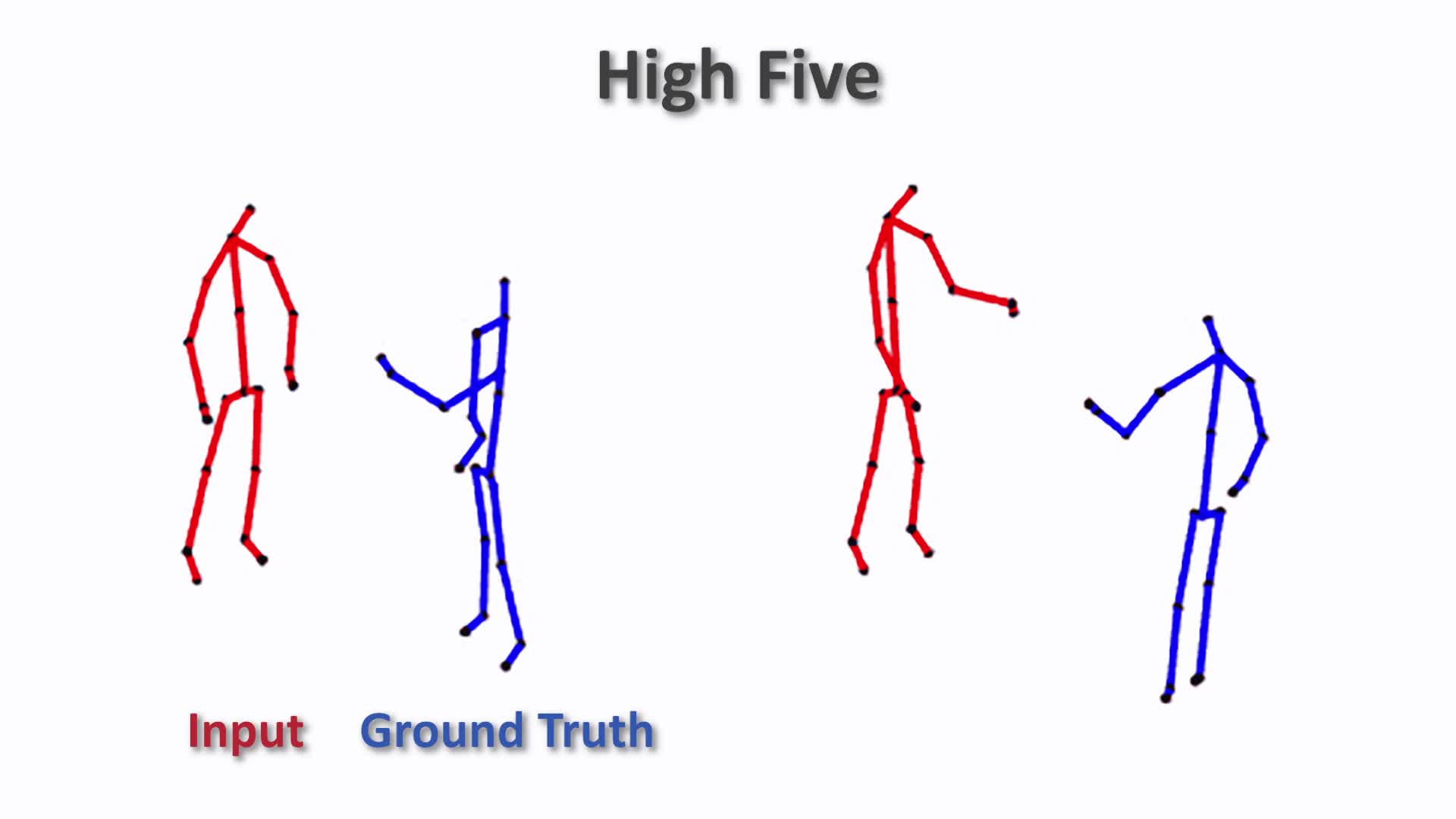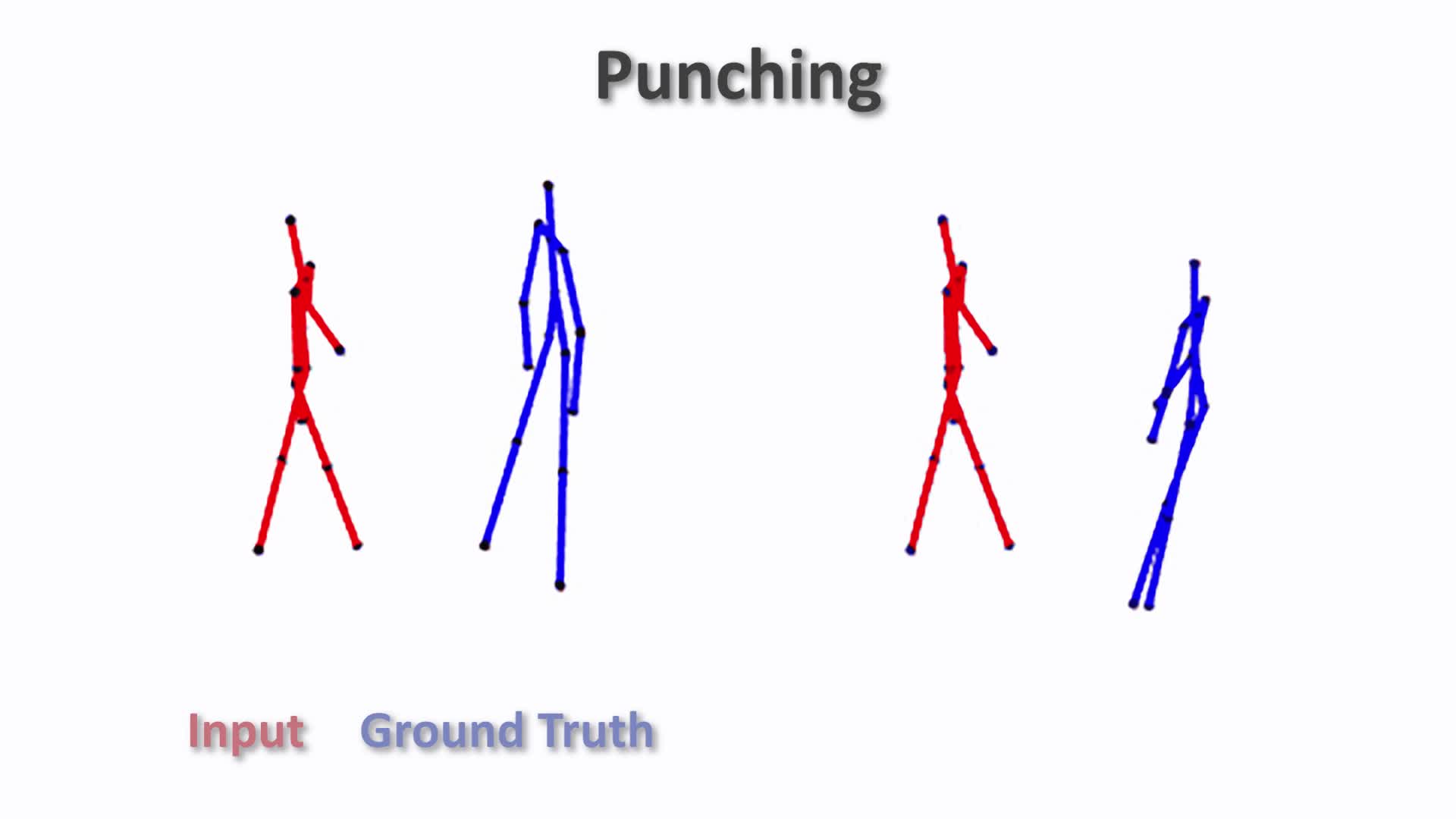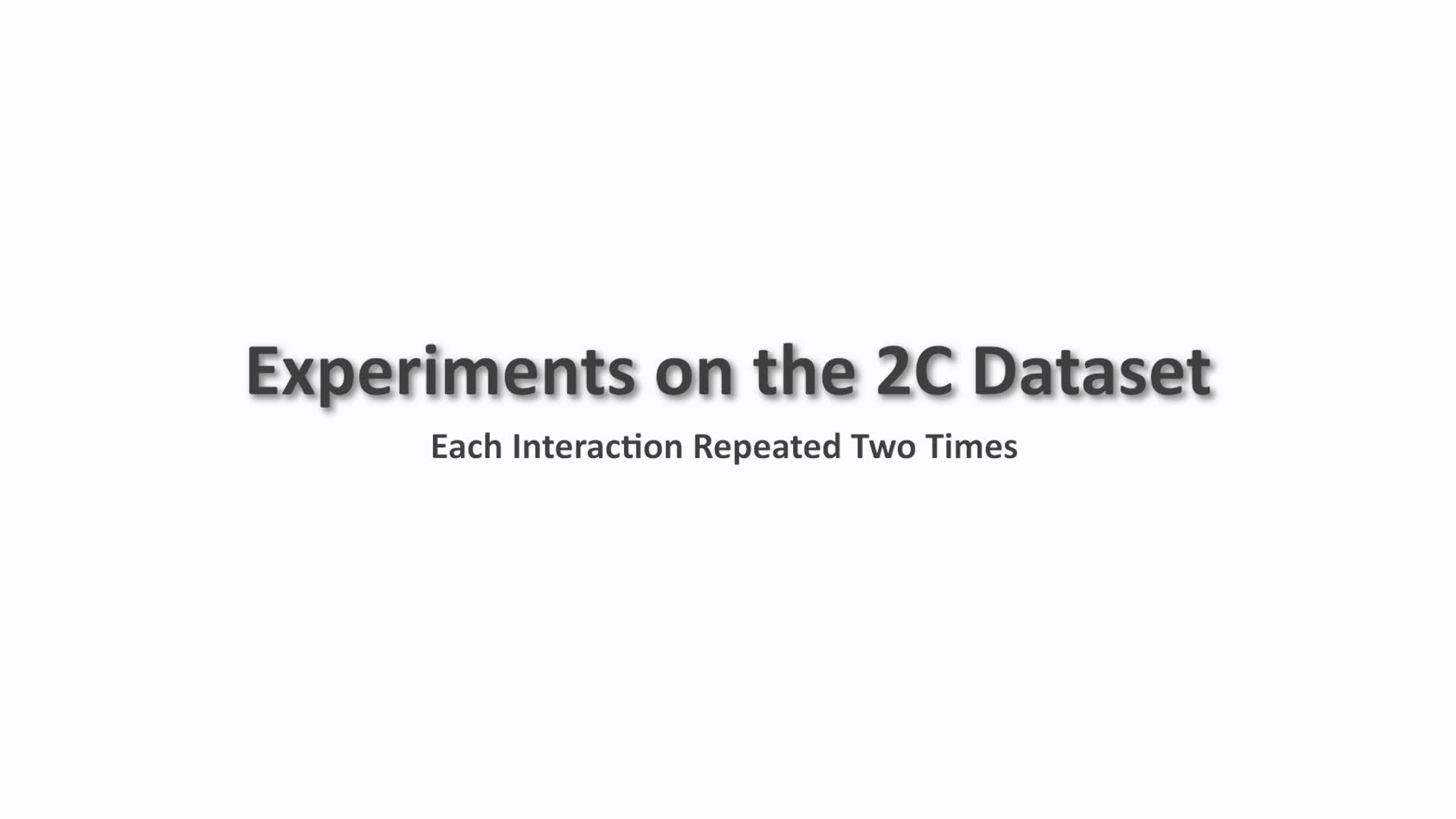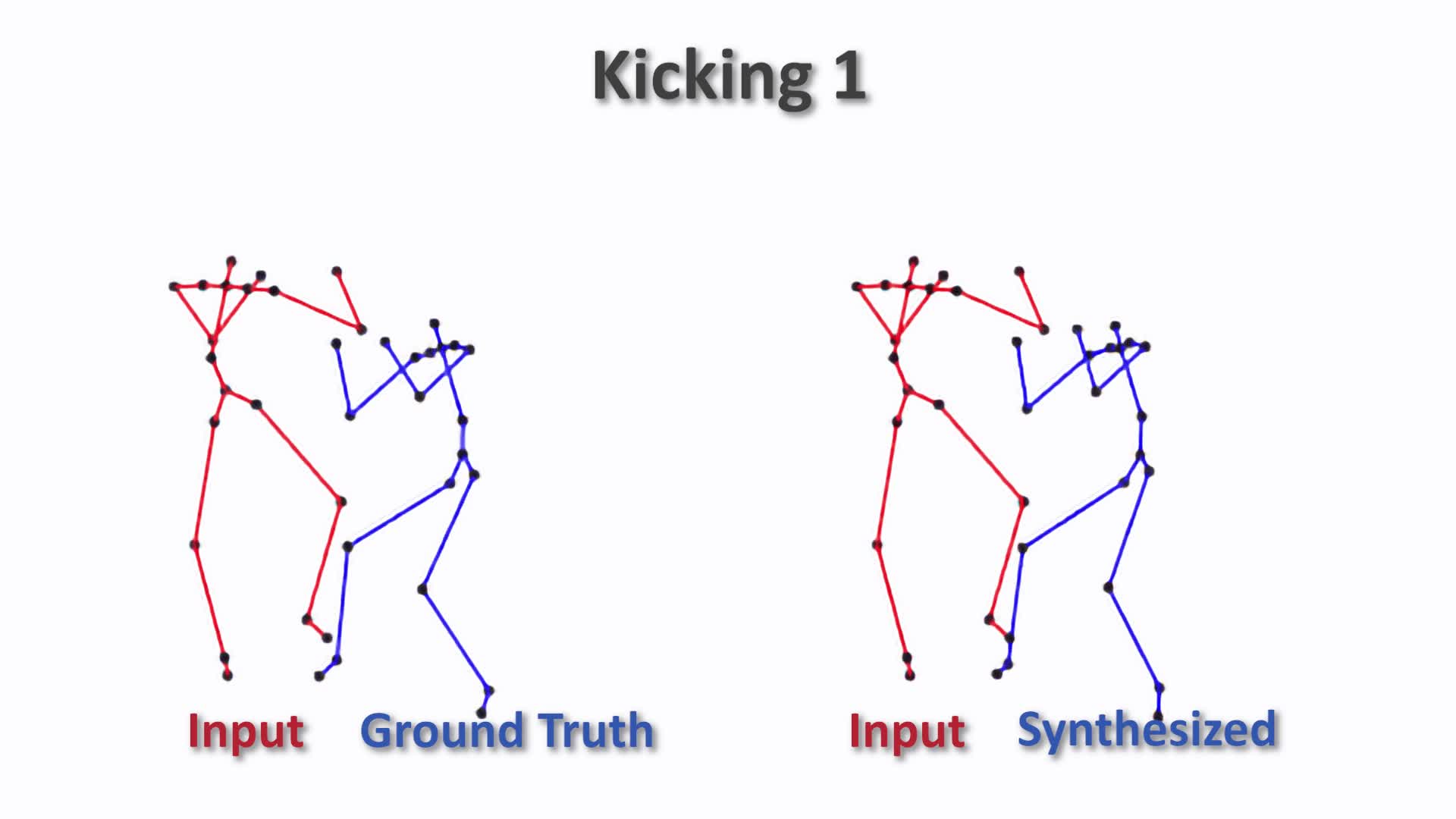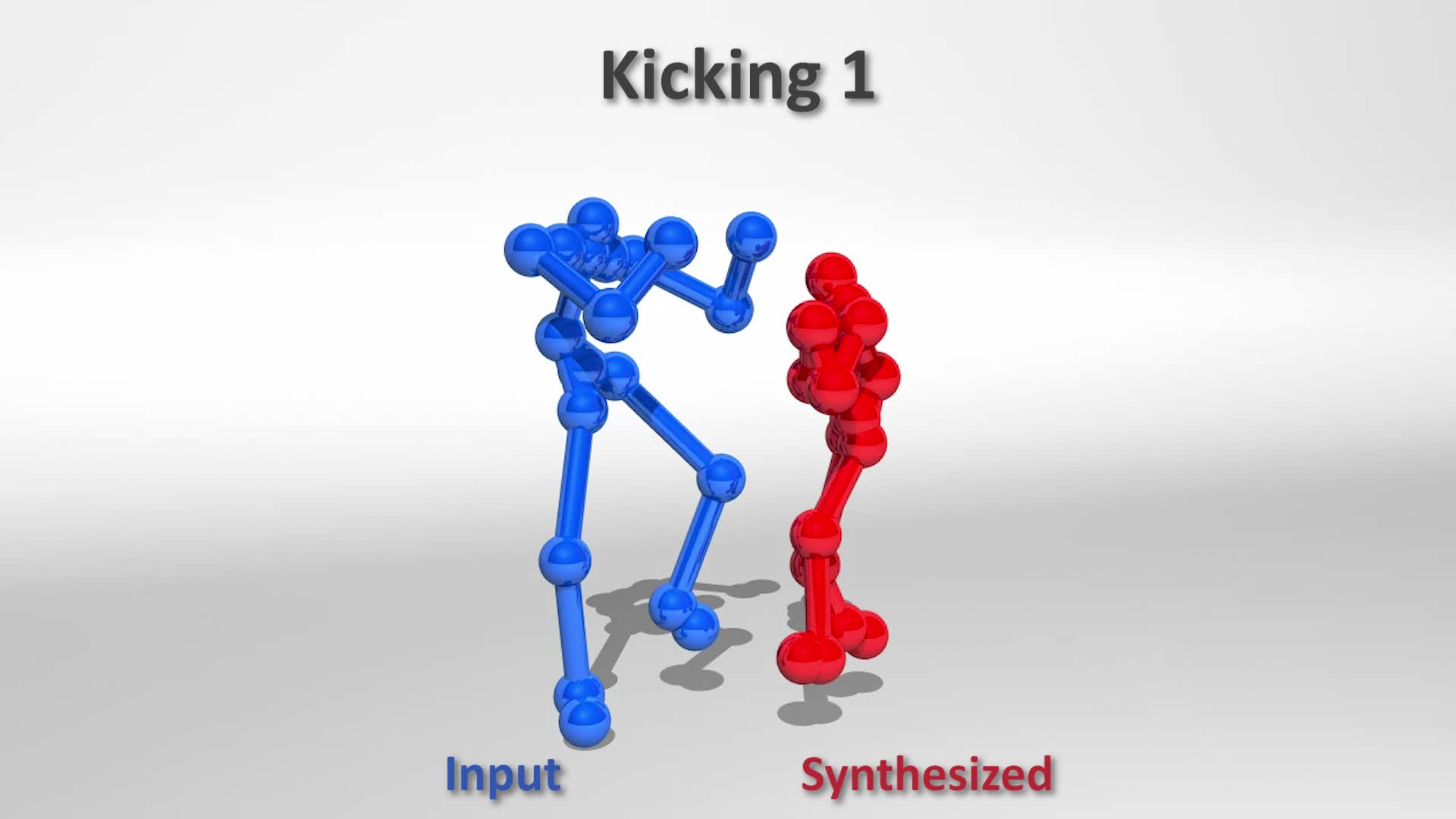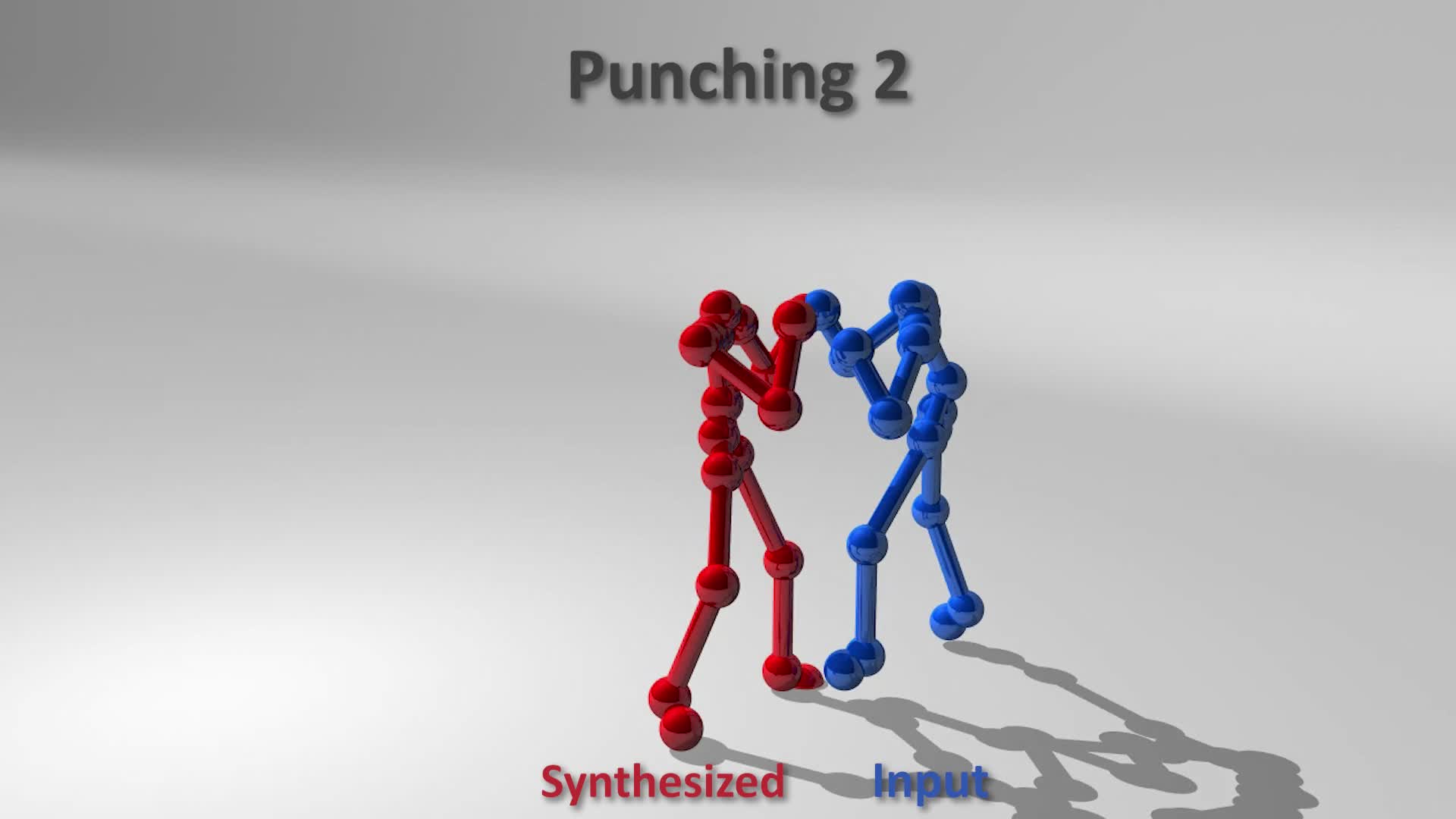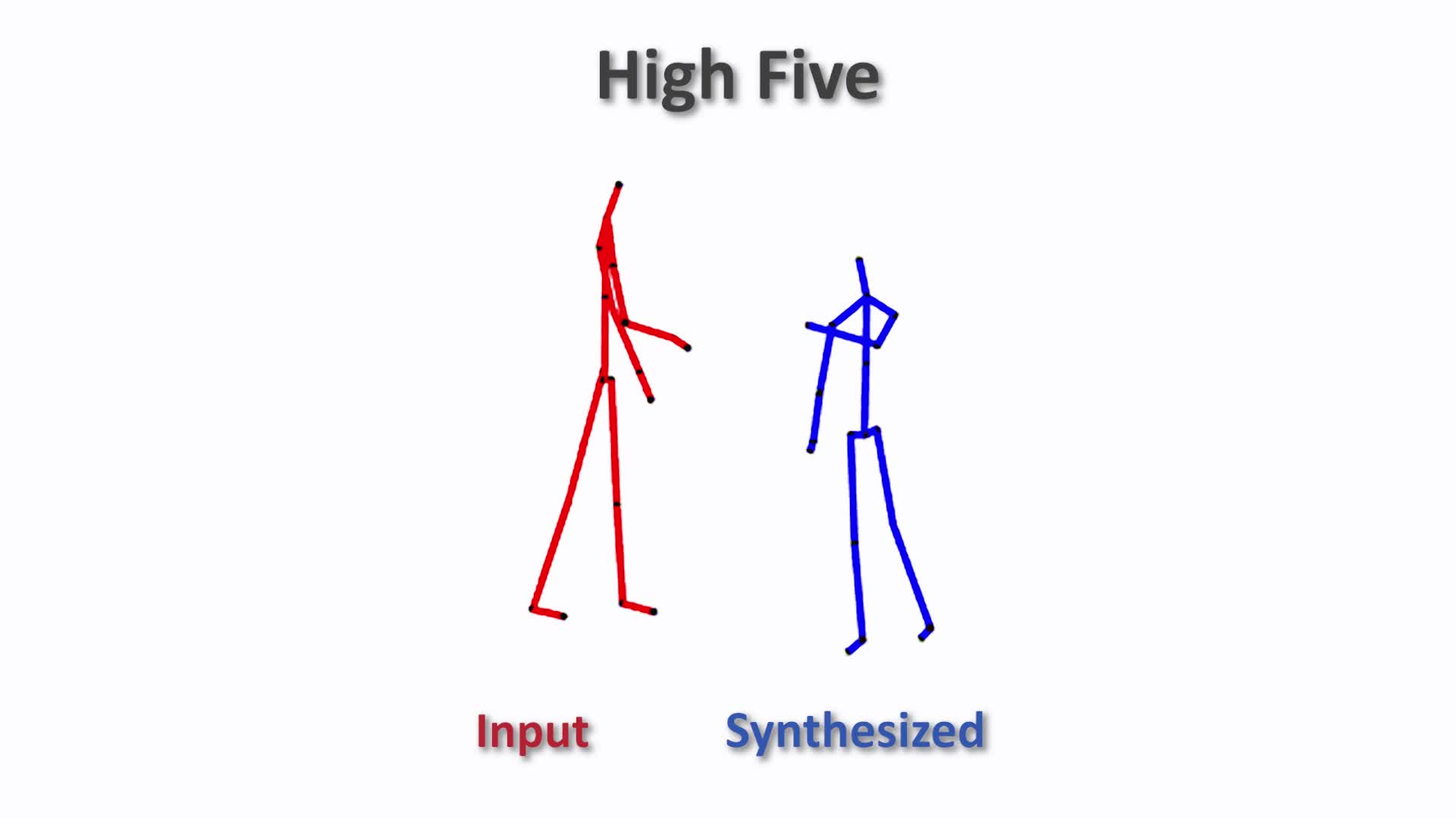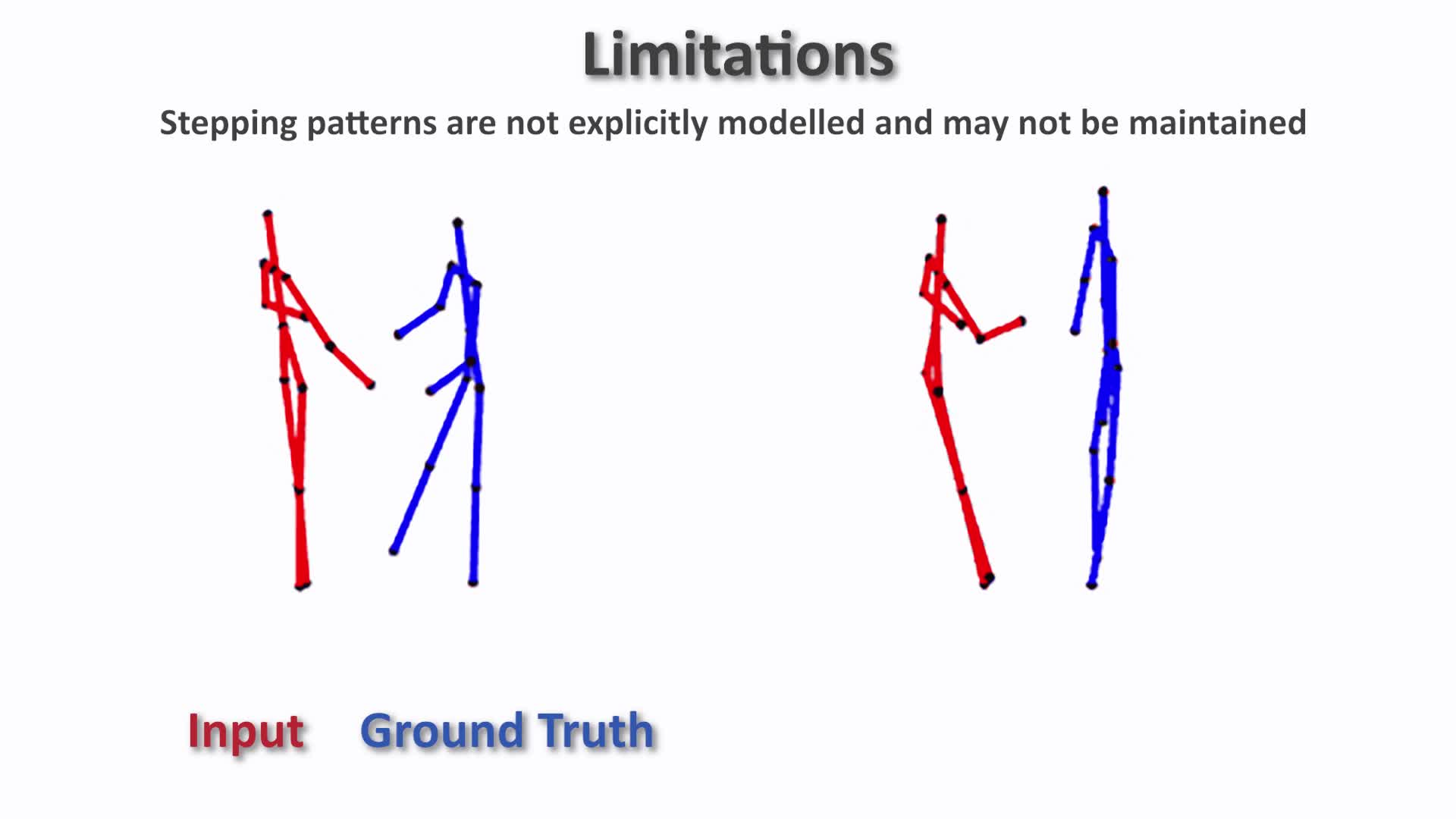GAN-based Reactive Motion Synthesis with Class-aware Discriminators for Human-human Interaction

Abstract
Creating realistic characters that can react to the users' or another character's movement can benefit computer graphics, games and virtual reality hugely. However, synthesizing such reactive motions in human-human interactions is a challenging task due to the many different ways two humans can interact. While there are a number of successful researches in adapting the generative adversarial network (GAN) in synthesizing single human actions, there are very few on modelling human-human interactions. In this paper, we propose a semi-supervised GAN system that synthesizes the reactive motion of a character given the active motion from another character. Our key insights are two-fold. First, to effectively encode the complicated spatial-temporal information of a human motion, we empower the generator with a part-based long short-term memory (LSTM) module, such that the temporal movement of different limbs can be effectively modelled. We further include an attention module such that the temporal significance of the interaction can be learned, which enhances the temporal alignment of the active-reactive motion pair. Second, as the reactive motion of different types of interactions can be significantly different, we introduce a discriminator that not only tells if the generated movement is realistic or not, but also tells the class label of the interaction. This allows the use of such labels in supervising the training of the generator. We experiment with the SBU and the HHOI datasets. The high quality of the synthetic motion demonstrates the effective design of our generator, and the discriminability of the synthesis also demonstrates the strength of our discriminator.
Publication
GAN-based Reactive Motion Synthesis with Class-aware Discriminators for Human-human Interaction by Qianhui Men, Edmond S. L. Ho, Hubert P. H. Shum and Howard Leung in 2022
Computers and Graphics (C&G)
Links and Downloads
YouTube
